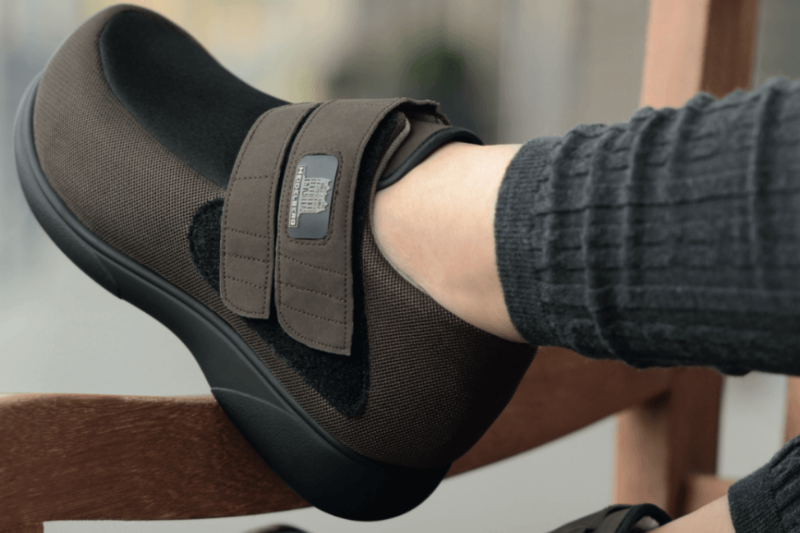
Diabetes is known to cause neuropathy, which is damage to the nerves of the foot and lower leg, which can cause pain, tingling, altered sensation or even loss of sensation. Diabetes also causes blood vessels to narrow and harden, reducing the circulation of blood to the feet.
Neuropathy and reduced blood flow can cause delayed wound healing, which increases the risk of foot complications. A poorly managed diabetic foot can result in callous, ulceration, vascular issues and poor skin quality that often lead to a decreased quality of life and is the leading cause of lower limb amputations.
CAUSES
Anything that touches the skin increases the risk of ulceration, however, those with intact sensation will be able to feel when something is rubbing or digging in and is able to remove the cause. For individuals with neuropathy and associated poor sensation, they are unaware of the increased pressure and as a result, don’t remove it. This leads to an increase in friction or pressure, which damages the skin and causes a Pressure Injury (PI).
WHAT IS A PRESSURE INJURY AND WHAT DO I LOOK FOR?
A Pressure Injury is caused by increased pressure that can result in localised damage to the skin and soft tissue. This typically occurs over bony prominences or in the presence of an ill-fitting device (shoe) particularly in those with neuropathy.
Pressure can appear to be a red area on the skin which is still present when there is no pressure being applied, swelling of the skin, localised heat or pain as well as a change in firmness or elasticity of the skin. Prolonged pressure causes skin breakdown which can appear as a graze or blister appears and result in an ulcer if left untreated.
IMPORTANCE OF FOOTWEAR
Diabetes Australia has conducted extensive research and formulated a guideline for clinicians on the most appropriate management for diabetic feet. Throughout their findings, there is an emphasis on prevention of disease and the importance of footwear.
The guidelines recommend that individuals with diabetes should wear appropriate footwear that fits and protects their foot. Appropriate footwear options are shoes that have adequate length, width and depth. The toe box is especially important as many shoes available in retail stores may have a narrow toe box which can apply unwanted pressures.
Features to consider for appropriate footwear:
- Toe box w/ sufficient width
- Heel counter
- Laces or Velcro fastening
- Low heel height
- Non-flexible midsole
- Reduced inner seams

For those at a high risk of foot ulceration, footwear options should be consulted with a health professional who will be able to fit therapeutic footwear where necessary. These shoes differ from retail shoes in that they are specifically designed to fit individuals who need a larger width and depth in their shoes. These shoes also make it easier to fit orthotics and often have features that make them easier to put on.

As mentioned earlier, anything that touches the skin can increase the risk of a PI. That’s why it’s important for those at a higher risk to check their feet for any areas of increased pressure after wearing shoes and their shoes for any foreign objects.
If you think you or someone you know has diabetes and is at risk of developing foot ulcers, see your local oapl clinic for prevention options.

We sell Diabetic friendly, extra depth/width footwear for you or your patients.
With a breathable nylon lined upper and a neoprene top, three removable EVA insoles are made with a latex top with an antimicrobial coating. They have a plush lining with minimal seams which is ideal for Diabetics or those with reduced/altered sensation.
These shoes feature a slip-resistant sole that can be worn indoors or outdoors, making them appropriate for hospital, rehabilitation, or even home settings. They are easily cleaned and can be washed at 40°C.
If you would like to see more click below:
SmartKnit® seamless diabetic socks are soft and non-irritating made especially for people with diabetic and sensitive feet.
Completely free of seams, SmartKnit socks use a stretchy core-spun latex-free yarn that creates socks that conform to your feet to reduce wrinkling and bunching. Ionic™ silver fibres wick away moisture from the skin faster than other diabetic socks to control moisture levels, reduce blister-causing friction, and control odours. The non-binding Halo Top™ fits comfortably to hold up the sock and minimise indentations.
SmartKnit® Seamless Diabetic Crew Socks
SmartKnit® Seamless Diabetic Mini Crew Socks
SmartKnit® Seamless Diabetic Socks Over Calf
SmartKnit® Seamless Diabetic Socks Wide


































































